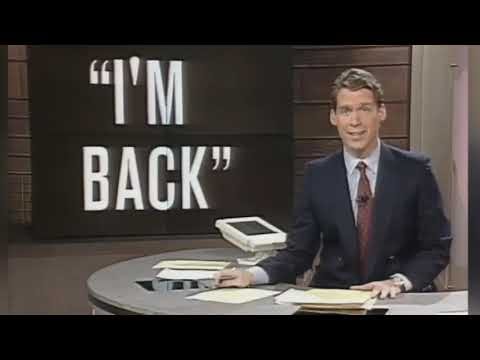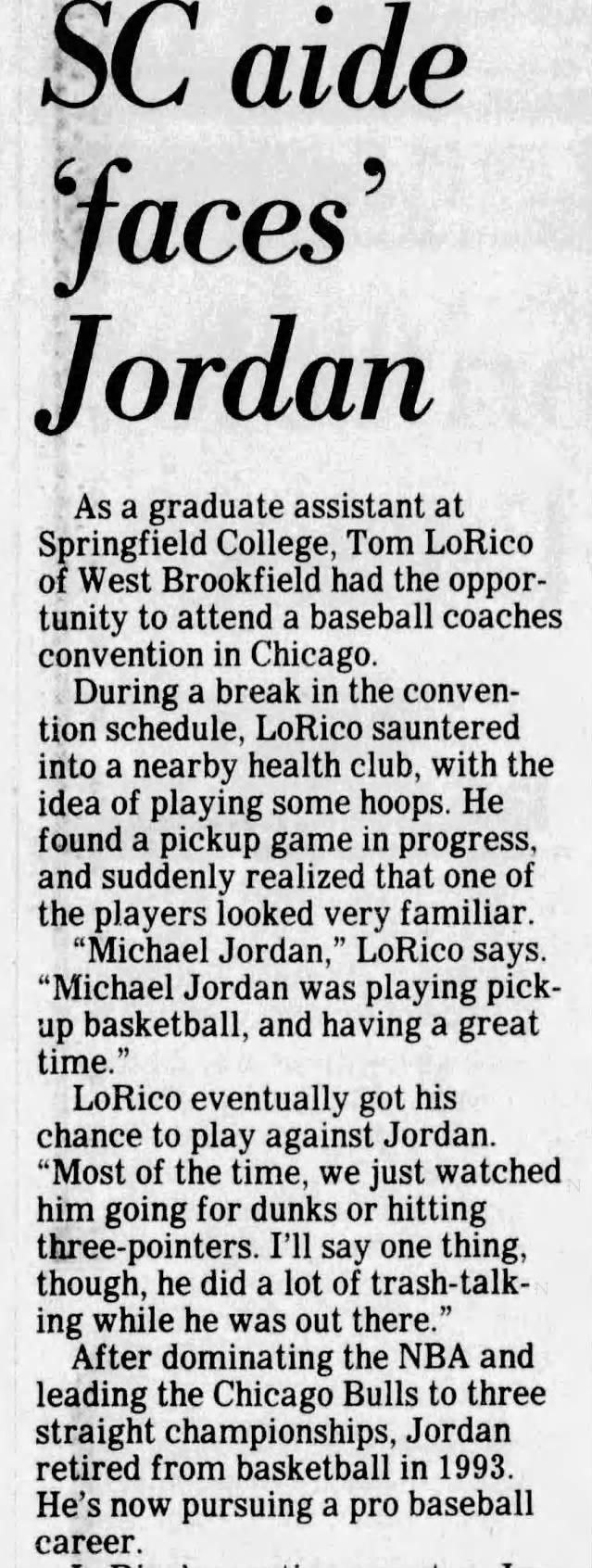"I'm Back" - The Cultural Impact of Michael Jordan's 1995 NBA Comeback
The build-up to Michael Jordan's return to the NBA from baseball in 1995 was as exciting as the comeback itself.
I’m back.
OK, so maybe analogizing the first Press Break newsletter in some time to Michael Jordan’s return to the NBA from his abortive pursuit of Major League Baseball is just a tad self-aggrandizing. At least there’s some historic symmetry behind my choosing this topic to get The Press Break back on track after an unplanned sabbatical.
Five years ago—how has it already been five years?—Jordan’s hold on American culture and the global basketball community gained renewed interest with the release of The Last Dance.
The Last Dance was brilliantly done in myriad ways, not the least of which was capturing just how transcendent Jordan’s popularity became. And even as a project that was undeniably positive in its depictions of Jordan, his being involved in its production and all, The Last Dance might well have undersold his popularity.
I write this as a child of the '90s who first got into basketball in tandem with Jordan’s rise. His first NBA Finals is the first championship series I vividly remember watching. Thanks to the Nike advertising campaign that featured Bugs Bunny, the Air Jordan 8 was the first basketball shoe I remember really wanting.
Although I didn’t own a pair of Jordans until years later, when I was old enough to earn my own money to put toward them, I was among the legion of elementary schoolers who donned the black baseball cap featuring the Bulls logo, despite my favorite team being the San Antonio Spurs.
Jordan’s abrupt retirement in 1993 was stunning news; people I never knew to have any interest in basketball, like my fifth-grade teacher, discussed it. His pursuit of a second life in baseball was headline news nationwide but took on a different fervor in my childhood home state of Arizona, where Jordan’s journey made a significant pitstop.
I did not make it to an Arizona Fall League game to see Jordan play for the Scottsdale Scorpions1; the Grand Canyon State had no hotter ticket in 1994, including a still-competitive Phoenix Suns team that featured Charles Barkley. That a fall rookie league ticket was more coveted than any other sporting event underscored a harsh reality the NBA faced during its limited time without Jordan.
It took all of one season without MJ for much of the cultural cachet the league spent the 1980s and the first half of the '90s establishing to wither, as evidenced in a Sports Illustrated cover from the first Jordan-less Finals in four years.
It’s not accurate to suggest Michael Jordan’s style of play changed the NBA. When he arrived in 1984, the league had already undergone a metamorphosis led by Magic Johnson and Larry Bird, prioritizing fast breaks and ball movement. Innovative coaches coming into the league, the influence of the American Basketball Association from the previous decade, and an influx of talented perimeter scorers all contributed to basketball being played outside-in.
Jordan’s high-flying game took the more open brand of basketball to another level. And once he stepped away, the NBA returned to a more 1970s style dominated in the paint. It’s unfair and inaccurate to suggest that 1994 Finals MVP Hakeem Olajuwon played overtly physical bully-ball; The Dream is one of the most thrilling centers of all time with a repertoire of back-to-the-basket moves that were actually quite comparable to the skill set that defined Jordan’s second run with the Bulls.
In general, though, the '80s and Jordan’s initial reign of dominance were more aesthetically pleasing to the casual fan, and pro sports are so reliant on attracting casual fans to maximize revenue. Big men never quite command the same attention.
But even the best guards have never commanded attention like Michael Jordan. The instantaneous decline in interest the NBA felt amplified efforts to have a replacement on deck, which had pervasive implications still felt today.
Anyone cognizant of the NBA during either of Jordan’s initial retirements in 1993 and 1998 knows that his departure left a void that league brass was desperate to fill—not by celebrating the next big stars on their own merits, but by positioning The Next Michael Jordan. Advertisers, media partners, perhaps even the NBA itself, did every All-Star swingman who entered the league from about 1992—Harold Miner, anyone?—into the 2000s a disservice.
Hell, it’s plagued LeBron James throughout a career that, in a variety of key metrics, has been more successful than Jordan’s on the court.
In 2025, the way Jordan’s presence continues to loom over the NBA is a bit mystifying. Public obsession with him in 1995 made a lot more sense, so it’s no wonder that buzz about a possible comeback reached a fever pitch before March of that year.
The weeks leading up to Jordan’s simple two-word declaration of his return are ingrained in my memory. Never mind the five years that have elapsed since The Last Dance—where have those three decades gone?!
My love for sports journalism was just beginning to take shape then, thanks in part to the fledgling SLAM. From the moment my dad brought the inaugural edition with Larry Johnson on the cover home from a supermarket run, I was a loyal reader for years.
The March 1995 SLAM that featured John Starks included a Michael Jordan poster. On newsstands and in mailboxes in January, SLAM hinted at—or perhaps more accurately, tried to manifest—a Jordan return in the coming year.
Massachusetts-based Division III university Springfield College being a vital place in multiple avenues of sports is one of my favorite oddities: The school launched the football career of Kansas City Chiefs defensive coordinator Steve Spagnuolo, is the alma mater of former offensive lineman-turned-wrestling megastar John Cena, and in 1995, hosted a graduate assistant central to really igniting the Jordan comeback media fervor.
As an elementary schooler who discussed it with classmates, I can attest that the lead-up was as exciting as the comeback itself—which is no slight to Jordan’s truncated 1995 season.
His 55-point game at Madison Square Garden is a legendary Michael Jordan moment. And for as bizarre as it looks now, No. 45 jerseys were all the rage when I attended Lute Olson Basketball Camp that summer (though MJ had already returned to No. 23 by then).
However, there was an energy leading to that announcement—that simple “I’m back”— that cannot be completely understood unless you were there for it.
The 1994 Scottsdale Scorpions roster included Nomar Garciaparra.





